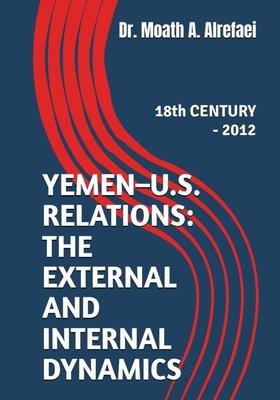
Book
Yemen - U.S. Relations: the External and Internal Dynamics: 18th CENTURY - 2012
(Write a Review)
Paperback
$19.99
This book addresses these key issues by exploring the myriad dynamics that drive bilateral relations between the two nations. It asserts that Yemen-US relations are governed by a complex array of factors, broadly categorized as external and internal. These dynamics are fluid, shifting with the ever-changing global environment and circumstances, making each stage of the relationship distinct from the next. Through a detailed analysis, this book offers a new interpretation of the systematic changes in Yemen-US relations and their future prospects. It highlights the wide range of dynamics-characterized by their plurality, overlap, and dual influence-that contribute to the instability and oscillation defining this relationship.
Externally, factors such as regional geo-strategic considerations and the legacies of the Cold War, alongside the democratization and human rights agenda in the new international order, have predominantly shaped the relations. Conversely, the influence of internal factors was traditionally marginal due to weak mutual interests, but this changed dramatically after the September 11 attacks. The escalating threats to homeland security posed by terrorist groups in both nations brought a new dimension to the relationship. Internal dynamics, such as Yemen's conflict with al-Qaeda, its economic and developmental needs, and the country's overall instability, were significant in shaping the bilateral relations during the first decade of this century. However, their influence has since evolved, marking a new era in the relationship between Yemen and the US.
This book stands out from others discussing the general state of Yemeni and American relations in two key ways. First, it avoids the conventional, chronological approach that often becomes tedious, opting instead for an analytical methodology that interprets changes in relations based on dominant factors. Second, it employs established scientific and methodological approaches from political science and international relations to ensure objectivity and enhance its scholarly integrity.
This book addresses these key issues by exploring the myriad dynamics that drive bilateral relations between the two nations. It asserts that Yemen-US relations are governed by a complex array of factors, broadly categorized as external and internal. These dynamics are fluid, shifting with the ever-changing global environment and circumstances, making each stage of the relationship distinct from the next. Through a detailed analysis, this book offers a new interpretation of the systematic changes in Yemen-US relations and their future prospects. It highlights the wide range of dynamics-characterized by their plurality, overlap, and dual influence-that contribute to the instability and oscillation defining this relationship.
Externally, factors such as regional geo-strategic considerations and the legacies of the Cold War, alongside the democratization and human rights agenda in the new international order, have predominantly shaped the relations. Conversely, the influence of internal factors was traditionally marginal due to weak mutual interests, but this changed dramatically after the September 11 attacks. The escalating threats to homeland security posed by terrorist groups in both nations brought a new dimension to the relationship. Internal dynamics, such as Yemen's conflict with al-Qaeda, its economic and developmental needs, and the country's overall instability, were significant in shaping the bilateral relations during the first decade of this century. However, their influence has since evolved, marking a new era in the relationship between Yemen and the US.
This book stands out from others discussing the general state of Yemeni and American relations in two key ways. First, it avoids the conventional, chronological approach that often becomes tedious, opting instead for an analytical methodology that interprets changes in relations based on dominant factors. Second, it employs established scientific and methodological approaches from political science and international relations to ensure objectivity and enhance its scholarly integrity.
Paperback
$19.99